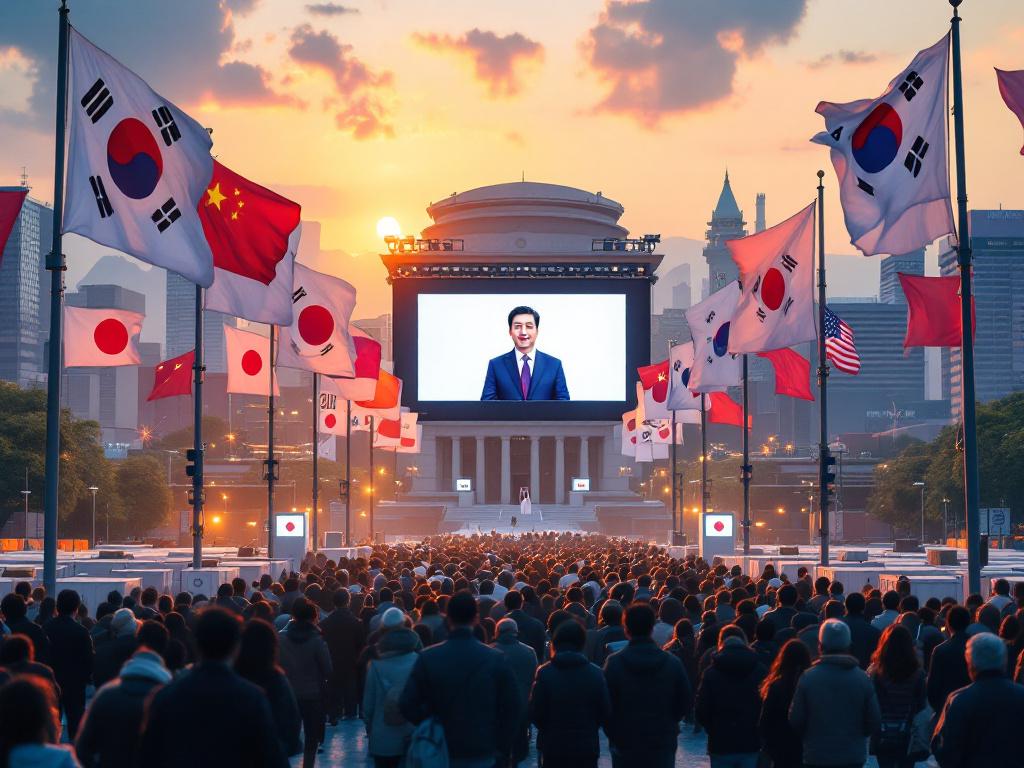
A dramatic, contemporary scene in Seoul at dawn: crowds lining up at polling stations beneath fluttering South Korean flags, skyscrapers and the National Assembly dome in the background. A newly elected leader addressing the nation on a large outdoor screen, symbolizing democratic transition. Visual cues of economic strain—currency boards showing a weak won, factories and shipping containers—balanced by hopeful citizens. Subtle international elements: the U.S. and South Korean flags side by side, distant silhouettes of China and North Korea landmarks, and a stylized rising sun motif for Japan in the background, suggesting diplomatic balancing. Clean, photojournalistic style, high contrast, cool morning light, sense
Summary
South Korea held a snap presidential election after the impeachment of President Yoon Suk Yeol over a failed martial law attempt, culminating in a victory for Democratic Party candidate Lee Jae-myung. The vote, marked by typically high turnout, served as a referendum on democratic stability and the country’s direction amid a weakened economy, a slumping won, and U.S. tariffs under a Trump administration. Lee enters office immediately with strong parliamentary backing but faces legal headwinds, a polarized electorate, and pressure to balance accountability for the martial law episode with promises of national unity. Internationally, he pledges pragmatic diplomacy: sustaining the U.S. alliance, easing tensions with China and North Korea, and adopting a firmer stance toward Japan—positions likely to test relations with Washington’s push for tighter trilateral alignment and higher defense burdens. His success will hinge on stabilizing democracy, navigating great-power pressures, and delivering economic relief.
Key Points
- Snap election follows Yoon’s impeachment after failed martial law decree
- Democratic Party’s Lee Jae-myung wins, backed by a National Assembly majority
- High-stakes agenda: democratic stabilization, economic recovery, public unity
- Pragmatic diplomacy aims to balance U.S. alliance with China/North Korea ties
- Policies toward Japan and U.S. burden-sharing could strain Washington ties